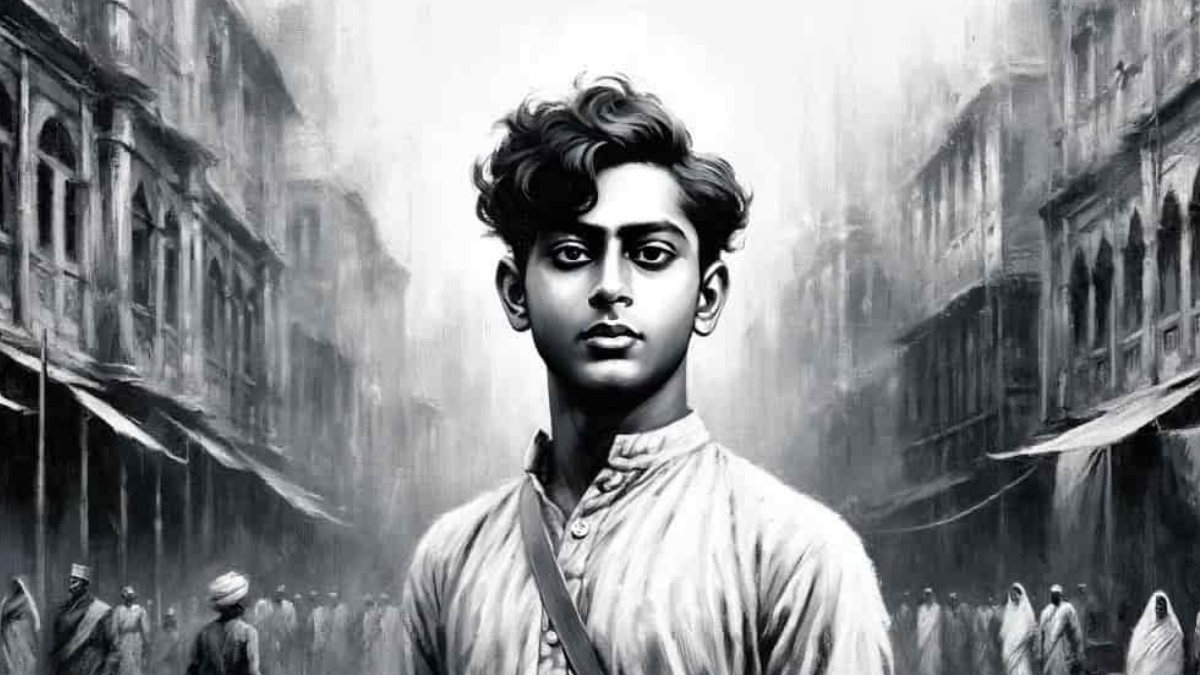The annals of India’s struggle for independence are adorned with countless heroes who laid down their lives for the nation’s freedom. Among these valiant souls stands Khudiram Bose, one of the youngest martyrs of the Indian independence movement. His unwavering courage and sacrifice have made him an enduring symbol of the revolutionary spirit of Bengal.
Early Life and Inspiration
Born on December 3, 1889, in the small village of Habibpur in Midnapore district, West Bengal, Khudiram Bose was destined to become a beacon of bravery. Orphaned at a young age, he was raised by his elder sister, Aparupa Roy, and her husband. Despite the hardships, Khudiram displayed an early inclination towards patriotism.
As a student, Khudiram Bose was inspired by the speeches and writings of prominent freedom fighters like Sri Aurobindo and Sister Nivedita. The partition of Bengal in 1905 further fueled his desire to contribute to the freedom struggle. He became actively involved in revolutionary activities, distributing pamphlets and participating in protests against the British Raj.
Entry into Revolutionary Activities
At the tender age of 15, Khudiram Bose joined the Anushilan Samiti, a revolutionary group in Bengal committed to the armed struggle against British colonialism. His dedication and fearlessness quickly earned him respect among his peers.
In 1906, Khudiram Bose audacious acts were a direct challenge to the oppressive regime and inspired many young Indians to join the freedom movement.
The Muzaffarpur Conspiracy
The most significant episode in Khudiram Bose’s short yet impactful life was the attempted assassination of British magistrate Douglas Kingsford. Kingsford was notorious for his harsh judgments against freedom fighters and was despised by the revolutionaries.
On April 30, 1908, Khudiram Bose, along with fellow revolutionary Prafulla Chaki, waited outside the European Club in Muzaffarpur, Bihar, where Kingsford was known to frequent. Mistaking the carriage carrying the wife and daughter of barrister Pringle Kennedy for Kingsford’s, they threw bombs at it, resulting in the tragic deaths of the two innocent women.
Realizing the gravity of the situation, Khudiram Bose and Prafulla Chaki fled the scene. While Chaki committed suicide to avoid capture, Khudiram was arrested by the British police at the Waini railway station. Despite the unfortunate outcome, this act of rebellion shook the British administration and highlighted the growing discontent among Indians.
Trial and Martyrdom
During his trial, Khudiram Bose displayed remarkable courage and unwavering conviction in his cause. He took full responsibility for the incident and expressed no remorse for his actions against the British rule. His fearless demeanor and youthful zeal garnered admiration from both his countrymen and some British officials.
On August 11, 1908, at the young age of 18, Khudiram Bose was hanged to death in Muzaffarpur Jail. Schools and colleges in Bengal remained closed, and people from all walks of life mourned the loss of this brave son of India. His execution evoked widespread outrage and sorrow across India. His sacrifice ignited a renewed fervor among Indians to fight against colonial oppression.
Legacy
Khudiram Bose’s martyrdom left an indelible mark on India’s freedom struggle. His life story inspired countless others to take up the mantle of resistance and contributed significantly to the eventual attainment of India’s independence in 1947.
Today, Khudiram Bose is remembered through various memorials and institutions named in his honor. Statues and plaques commemorating his sacrifice can be found across West Bengal and other parts of India. His hometown in Midnapore has a museum dedicated to his life and contributions.
Conclusion
As we celebrate India’s independence, it is essential to remember and honor heroes like Khudiram Bose, whose revolutionary spirit and sacrifice laid the foundation for a free and sovereign nation.












